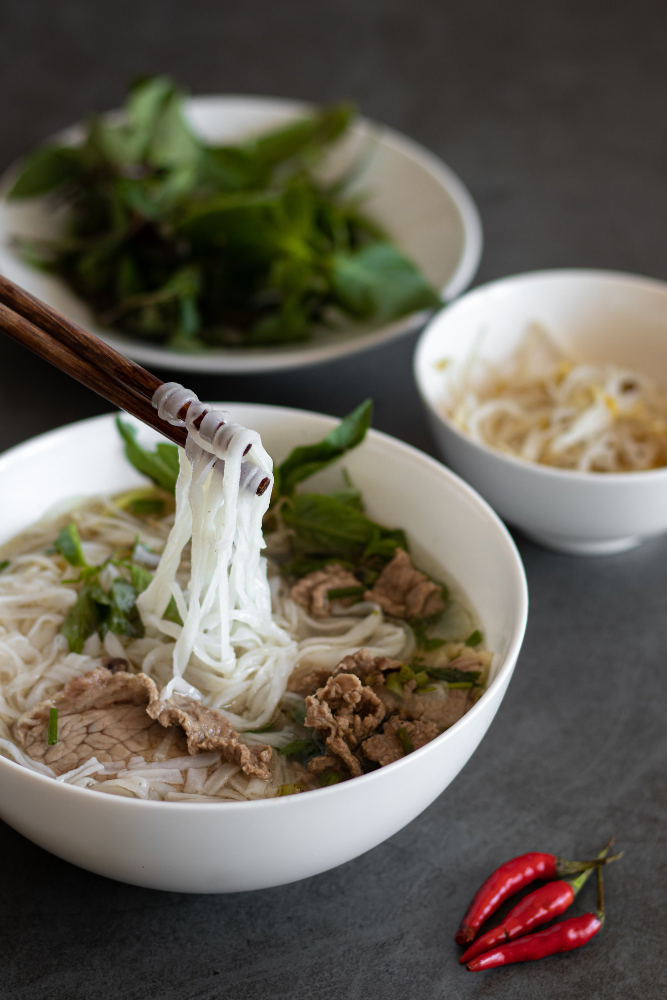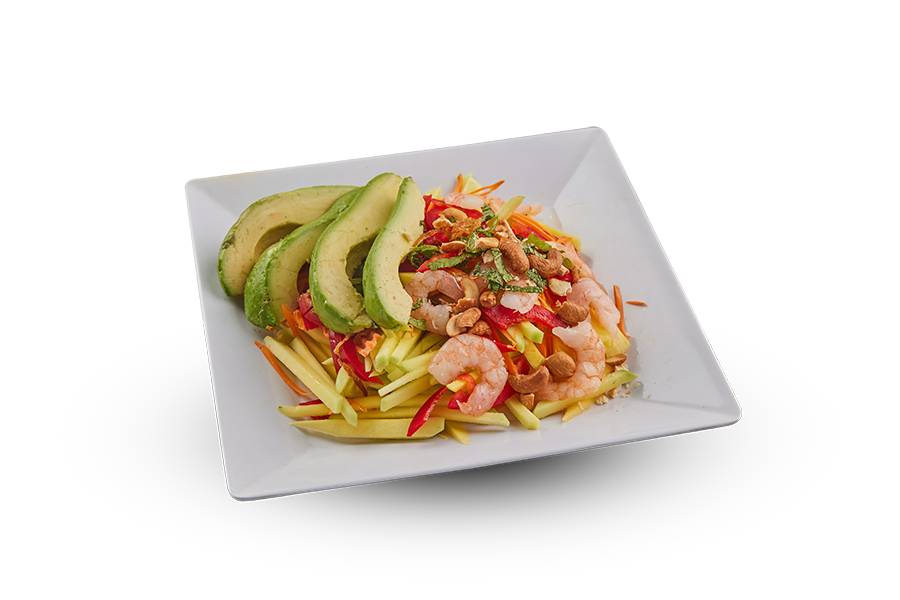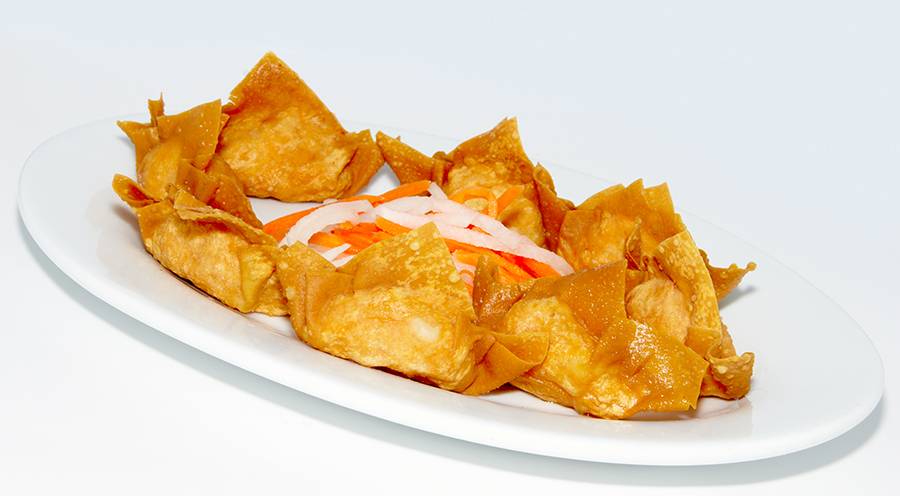The Charm of Vietnamese Street Food
The Ambiance
Vietnamese street food is a sensory explosion that begins with the lively ambiance of bustling streets. Sidewalks transform into impromptu kitchens, where nimble hands deftly assemble dishes on makeshift stalls. The aroma of grilling meats, the sizzle of hot oil, and the rhythmic clatter of chopsticks against metal bowls create an immersive, authentic, unfiltered experience.
Accessibility and Affordability
One of the defining characteristics of Vietnamese street food is its accessibility. From the iconic Pho stands to Banh Mi vendors, these humble setups provide an affordable and quick way for locals and visitors alike to indulge in the rich flavours of Vietnamese cuisine. Street food is not confined to a specific demographic; it is a culinary equalizer, welcoming people from all walks of life to savour the same exquisite flavours.
Variety and Innovation
Vietnamese street food is a testament to the creativity and innovation that emerges from the streets. Local vendors often put unique twists on traditional dishes, creating a kaleidoscope of flavours. From regional specialties to fusion creations, the diversity of street food offerings reflects the dynamic nature of Vietnamese culinary traditions.
Social Experience
Beyond the delectable offerings, street food is a communal experience. The shared plastic stools, the animated chatter, and the camaraderie among patrons create an atmosphere of friendliness. Whether seated at a street corner or perched on a tiny plastic stool, diners become part of the vibrant tapestry of street life while enjoying a meal.
Restaurant Cuisine - Refined Elegance
Ambiance and Atmosphere
In contrast to the lively chaos of the streets, restaurant cuisine in Vietnam often unfolds in refined settings. Elegant dining rooms, tasteful décor, and attentive service contribute to a sophisticated and inviting atmosphere. Whether it's a family-owned eatery or a Michelin-starred establishment, restaurants in Vietnam aim to provide a dining experience that transcends the mere act of eating.
Culinary Expertise
Vietnamese restaurant cuisine showcases the skill and expertise of chefs who have honed their craft. These culinary artisans often bring a refined touch to traditional dishes, presenting them with meticulous attention to detail. The plating, presentation, and flavour balance reflect a commitment to elevating the dining experience beyond the ordinary.
A La Carte and Specialties
Restaurant menus in Vietnam often feature an extensive array of dishes, allowing patrons to explore a variety of flavours in a single setting. Unlike the specialized focus of many street vendors, restaurants offer a broader culinary journey, allowing diners to savour everything from delicate spring rolls to intricately prepared seafood specialties.
Table Service and Wine Pairing
Another notable distinction is the presence of table service and the option for wine pairing in restaurants. The attentive staff, knowledgeable about the menu, assists diners in navigating the culinary offerings. This elevated level of service contributes to a seamless and enjoyable dining experience characteristic of restaurant cuisine.
Flavor Profiles - Street Food vs. Restaurant Cuisine
Authenticity of Street Food Flavours
The flavours of Vietnamese street food are often celebrated for their unadulterated authenticity. From the savoury umami of a steaming bowl of Pho to the charred perfection of Banh Xeo, street vendors prioritize bold and genuine flavours. The simplicity of ingredients and the directness of preparation methods contribute to an unapologetic celebration of Vietnam's culinary heritage.
Innovation in Restaurant Cuisine
While street food embraces tradition, restaurant cuisine in Vietnam often leans towards innovation. Chefs in upscale establishments may experiment with unique flavour combinations, infusing traditional dishes with a modern twist. This innovation does not dilute Vietnamese cuisine's essence but offers a new perspective on familiar flavours.
Regional Specialties
Both street food and restaurant cuisine highlight the regional diversity of Vietnamese gastronomy. Street vendors may specialize in local favourites that capture the essence of a specific region, such as Bun Cha in Hanoi or Cao Lau in Hoi An. In contrast, restaurants often curate menus with a broader selection of regional specialties, allowing diners to embark on a culinary journey across Vietnam without leaving their seats.
Signature Dishes
Certain dishes stand out on the streets or in restaurants as iconic representatives of Vietnamese cuisine. Street food may boast signature dishes like Banh Mi and Pho, celebrated for their ubiquity and affordability. In restaurants, signature dishes often showcase a chef's unique interpretation of Vietnamese classics, adding an element of culinary artistry to the dining experience.
Culinary Innovation - Bridging Street and Restaurant
Rise of Upscale Street Food
In recent years, a culinary evolution has occurred, with some street food vendors leaping to upscale dining. This trend, often referred to as "gourmet street food," combines the authenticity of street food with the refinement of restaurant cuisine. Upscale street food establishments aim to preserve the soul of traditional dishes while presenting them in a more polished setting.
Street Food-Inspired Restaurants
Conversely, some restaurants draw inspiration from the vibrant world of street food. By infusing the casual and communal aspects of street dining into their establishments, these restaurants aim to capture the essence of Vietnam's culinary streetscape. The result is a fusion of street food charm with the comfort and amenities of a restaurant setting.
Cross-Cultural Fusion
The cross-cultural exchange between street food and restaurant cuisine is more comprehensive than in Vietnam. Internationally, chefs embrace Vietnamese flavours, experimenting with the marriage of street food elements and refined dining concepts. This global fusion introduces Vietnamese cuisine to new audiences and fosters creativity in the culinary world.
Accessibility and Inclusivity - Street Food's Global Appeal
Street Food as a Cultural Ambassador
Vietnamese street food serves as a cultural ambassador, introducing the world to the authentic flavours of Vietnam. Its accessibility, both in terms of cost and availability, makes it an approachable entry point for those new to Vietnamese cuisine. Street food vendors, whether in Hanoi or on the streets of New York, offer a gateway to the culinary traditions of Vietnam.
Inclusivity and Shared Experiences
Street food's global appeal lies in its inherent inclusivity. It welcomes everyone, from locals seeking a quick and affordable meal to travellers eager to immerse themselves in the local culture. The shared experience of sitting on plastic stools, engaging with locals, and savouring the same beloved dishes fosters a sense of connection and community.
Restaurant Cuisine - A Culinary Destination
While street food is celebrated for its accessibility, restaurant cuisine serves as a culinary destination. Restaurants in Vietnam and those serving Vietnamese cuisine globally cater to a diverse audience seeking a more formal and immersive dining experience. The refined setting and expansive menus make restaurants an ideal choice for those looking to explore the nuances of Vietnamese gastronomy in a more structured environment.
Challenges and Considerations
Hygiene and Safety Concerns
One of the primary considerations when comparing street food and restaurant cuisine is the perception of hygiene and safety. While street food is celebrated for authenticity, concerns about food safety may deter some diners. With their regulated environments, restaurants often provide a sense of reassurance for those prioritizing food safety.
Language Barriers
Navigating street food offerings may challenge those unfamiliar with the local language or specific dishes. In restaurants, the presence of menus with descriptions in multiple languages and staff assistance can alleviate language barriers, making the dining experience more accessible for international visitors.
Comfort and Amenities
While offering an authentic and immersive experience, street food may need more comfort and amenities associated with restaurant dining. For some, the lack of air-conditioning, formal seating, or restroom facilities may impact their preference for street food over restaurant cuisine.
Culinary Exploration
The choice between street food and restaurant cuisine ultimately comes down to personal preferences and the type of culinary exploration one seeks. Some may prioritize the authenticity and immediacy of street food, while others may opt for the curated experience and comfort of restaurant dining.
To Sum Up
In the kaleidoscope of Vietnamese cuisine, street and restaurant cuisines contribute unique hues to the culinary tapestry. Street food, with its authenticity, accessibility, and communal charm, captures the essence of everyday life in Vietnam. On the other hand, restaurant cuisine elevates Vietnamese gastronomy to new heights, offering refined settings, culinary expertise, and innovative interpretations of traditional dishes.
The comparison between Vietnamese street food and restaurant cuisine is not a matter of superiority but a celebration of diversity. Both avenues provide an opportunity to explore the multifaceted flavours of Vietnam, each offering a distinct lens through which to appreciate this vibrant nation's rich and evolving culinary traditions. Whether seated on a plastic stool or at a linen-draped table, the journey through Vietnamese cuisine is a captivating exploration that transcends the boundaries of street and restaurant, inviting everyone to savour Vietnam's unique and unforgettable flavours.
Here are some delicious food and drinks to try when ordering from PHO restaurants in Toronto:
House Special Beef Noodle Soup (Phở Đặc Biệt)
Shrimp and Chicken Pad Thai (Padthai Tôm Gà)
Combination Fried Rice (Cơm Chiên Dương Châu)






















